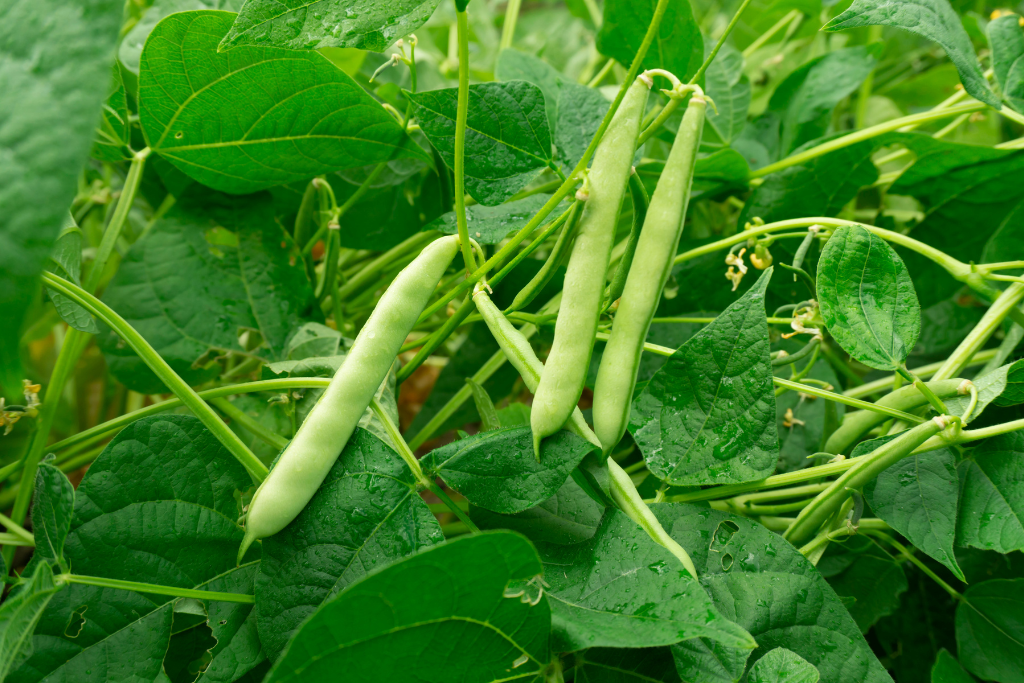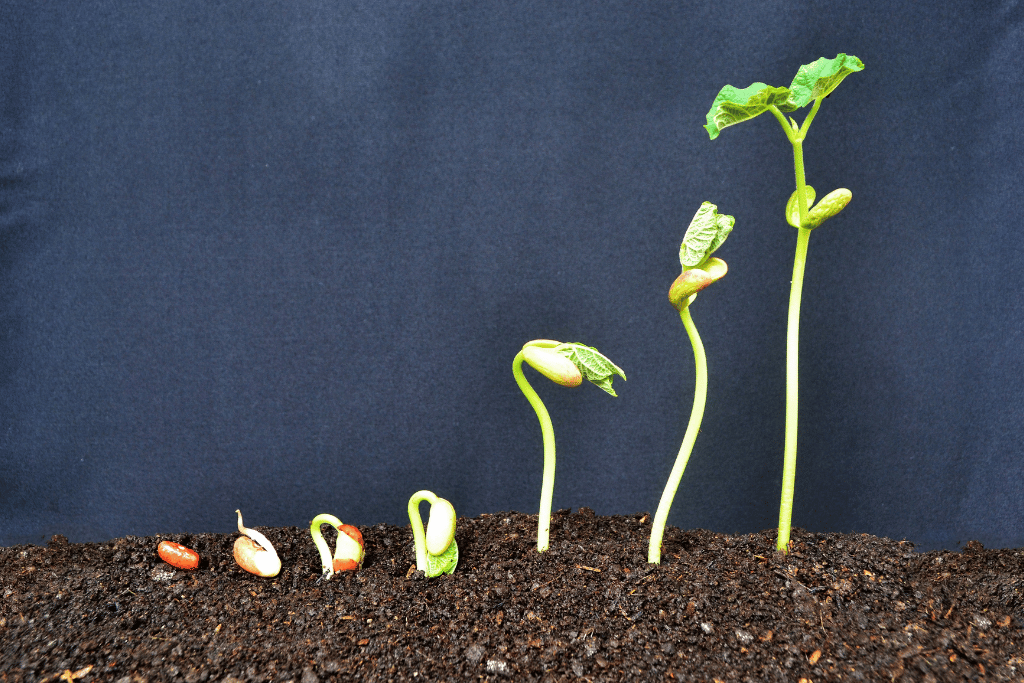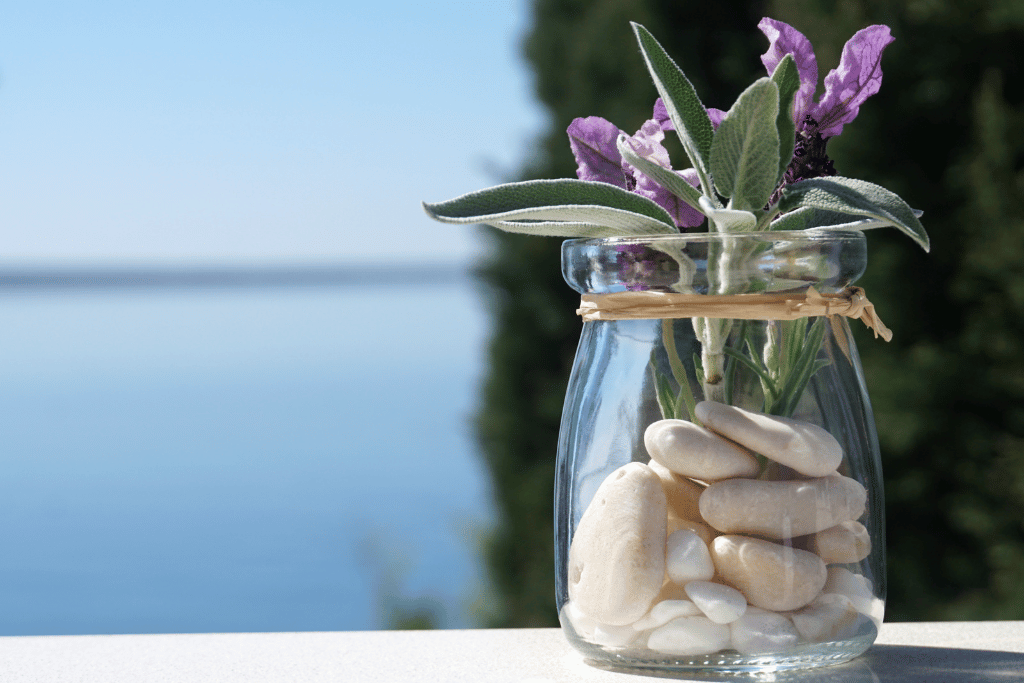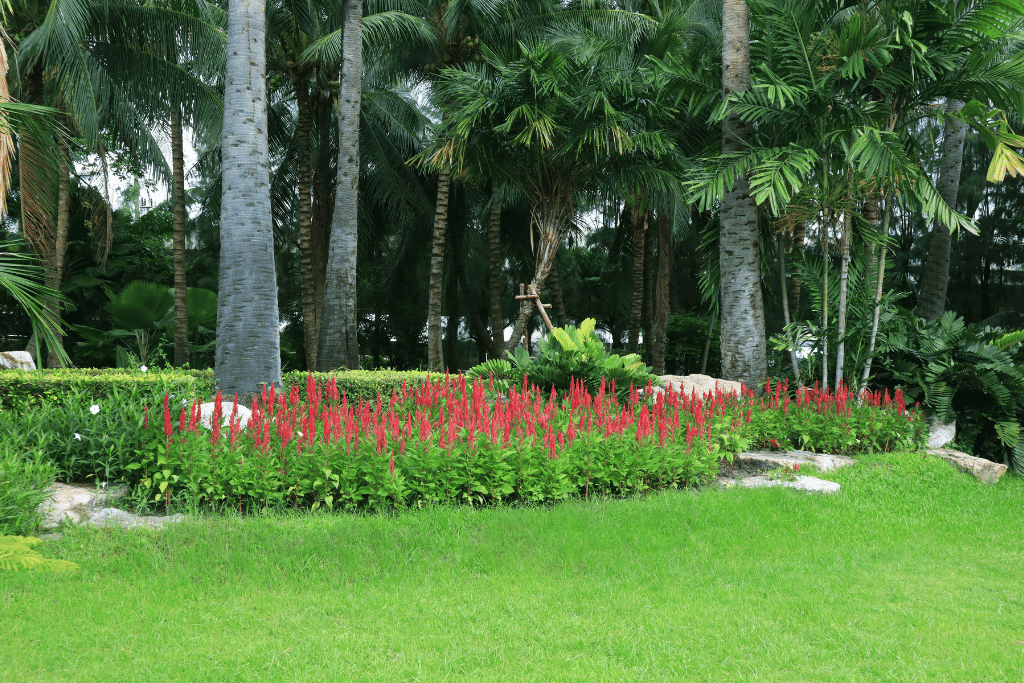
Green bean plants? At first, I must admit, I thought they were a bit dull. But as I delved deeper, I discovered that these little plants are anything but ordinary, especially when I researched on green bean plant stages.
The life cycle of green bean plant stages is fascinating, going through various distinct stages of development, they possess an incredible ability – the power to climb and cling to anything in their path.
I mean, that’s pretty amazing! These plants use their wiry tendrils to scale walls, fences, and even other plants. As for me, I’m all about challenges, and I knew I had to have these little climbers in my outdoor haven.
So, growing green beans requires understanding the various growth stages. Lucky for you, learning about “green bean plant growth stages” is easy. All you need to do is continue reading and you’ll have all the information you need.
My Story – Why was it a Challenge for me to Grow Green Bean Plants?

Being the stubborn person I am,I didn’t want to take the easy route and grow them in a traditional garden bed or on a simple trellis. No, I wanted to get creative and do something truly unorthodox – I decided to grow them on a high wall!
Advice: If you’re a beginner, keep it as simple as possible, and grow them in a garden bed.
So, here’s what I came up with: I constructed a massive wall made of metal grids, and planted my green bean seeds at the bottom. Maintaining them was a bit tough since I have other plants to look after as well. I had to ensure they were watered, exposed to adequate light, and fed sufficient nutrients for them to keep growing. The plants sprouted and snaked their tendrils up the metal grid, clinging on as they climbed higher.But as the weeks passed, I was content as my green bean plants transformed from small, fragile seedlings into massive vines that stretched all the way up to the third story of the wall!
And let me tell you, the sight of those green beans dangling from the vines was the most satisfying thing ever. It was like a living masterpiece, a testament to the indomitable strength and resilience of nature.
So, let me shed light on the green bean plant stages so that you can make sure you grow it right.
Stage#1 – Planting Seeds Stage

The stages of a green bean plant starts from planting. It involves choosing the seeds and planting them the right way. Here’s how the beginning stages of a green bean plant go:
The seed selection
I must confess, when I first walked into the local garden store to buy my green bean seeds, I was immediately overwhelmed. The sheer number of seed packets available left me feeling anxious and unsure. There were so many varieties of green bean seeds to choose from, and I didn’t know where to start. Should I play it safe with classic bush beans, or take a chance on something more exotic like pole beans? And then there were different colors to consider – should I stick with the classic green, or mix things up with yellow or purple beans?
After much consideration, I finally settled on a few different types of seeds – some classic green bush beans and some colorful pole beans. I decided to go big or go home, right?
Oh btw, bush beans and pole beans are two common types of green beans.
Bush beans, rising up to two feet in length and not requiring a cane for support, are short & bushy plants. Gardeners who seek rapid harvests will appreciate their concentrated yield of both snap and wax beans over the course of one or two weeks. Perfect for those looking for an expedited bounty.
Pole beans are a vining type of green bean that can grow up to 10 feet tall. They require support, such as trellises or poles, to climb on. Pole beans produce a longer harvest season than bush beans, with some varieties producing beans for up to 6 weeks. They also tend to have a more robust, complex flavor than bush beans. Pole beans are also known as runner beans.
Planting methods and giving my beans room to grow
When the time came to plant my seeds, I wanted to make sure I did everything right. I opted for the traditional approach of planting the bush beans in rows in my garden bed. But when it came to the pole beans, I got a little more creative. I decided to use an old ladder as a trellis to support them as they grew.
I took extra caution when I planted each seed to ensure they had enough space. Crowding them would have inhibited their growth, so I followed the directions on the packets closely. That way, each seed could blossom and prosper.
As for the planting space, I have a huge outdoor area available. I started off by planting green bean seeds an inch deep and 3 inches apart.
Stage#2 – Germination: My Beans are Alive!

Next up in the green bean plant stages is the germination stage. Honestly, I was over the moon with excitement when I saw tiny sprouts peeking out of the soil. Witnessing the germination stage of my green bean plant was like witnessing the birth of new life.
As each day passed, I checked on my green beans eagerly.
Monitoring and duration:
My green beans were heavily monitored – water levels, temperature (70-80 F) and soil quality all had to be perfect. Then came the 7-10 day wait… and my hard work paid off as I saw them germinate!
Do keep in mind that this stage needs to be closely watched and attended to. If there are any failings in the germination stage, the plant can face problems during further growth.
Stage#3 – The Seedling Stage: It’s Where the Magic Happens

The stage following the germination of a green bean plant is the seedling stage; this is when your bean sprouts are just beginning to grow. Small and delicate, but full of potential – it’s an amazing sight to behold.
Healthy seedlings appear like little green miracles, with hearty roots and a few sets of true leaves complementing its bright green color. To make sure they thrive, you must provide the right amount of light, water and nutrients – while protecting them from any pests or diseases. It may take some extra care but the efforts are well worth it when you witness those vibrant green miracles coming to life.
Factors that affect seedling growth: It’s a balancing act
It’s like when you’re juggling – so many elements have to be in balance for your green bean seedlings to flourish. Temperature, light, water, soil quality and the threat of pests or disease can make it seem overwhelming! But once you get the hang of it, it feels like second nature. You’ll soon recognise what is needed and make adjustments accordingly. When those little green miracles emerge, it’s an incredibly amazing feeling! It’s like a rush of adrenaline.
Caring for seedlings: A labor of love
Caring for green bean seedlings is an act of devotion. You must water them appropriately, give proper illumination, and fertilize with caution. Monitoring for bugs and illnesses is a necessity, plus being prepared to take action immediately when needed. It’s a lot of effort, but so rewarding to observe those little green miracles starting to develop!
And there’s an emotional component to it too. The tending to seedlings is like witnessing your plants becoming mature – you feel so proud of their achievements, and arrange them a new pot when they outgrow the current one.
The beauty of the seedling stage is that it’s a period for expansion and transformation, with endless possibilities.
Duration of the seedling stage
The seedling stage may be a magical time, but it’s also fleeting. Before you know it, those little green miracles will start to outgrow their pots and need to be transplanted. It’s like watching your children grow up and move out of the house – bittersweet, but also a sign that you’re doing something right. So, expect between 50 and 65 days for this stage to complete.
Stage#4 – Leaf Growth

So when you’re growing a green bean plant, it goes through a few different stages. First, a single stem pops up with two little leaves on top called cotyledons. These leaves might look a little different from the usual bean plant leaves, but they’re super important in helping the plant grow big and strong. After a little while, some new, more mature leaves grow in and replace the cotyledons. Inside those leaves are some cool cells with chlorophyll that help the plant turn sunlight into energy.
Stage #5 – The Flower and Pod Development Stage

Green beans need to flower before they can reproduce – and this stage is called the green bean flower stage. It marks a crucial phase in the growth process of these pods, enabling them to go from being immature plants to the ones that are ready for reproduction. Once this flowering stage has been completed, it signals that the plant is prepared for reproducing.
The timing of when a bean plant flowers can vary depending on the type of bean. However, generally, you can expect to see those lovely white flowers popping up about six to eight weeks after germination. And let me tell you, seeing those delicate flowers transform into tasty green bean pods is truly magical!
As mentioned earlier, there are two main types of green beans: bush beans and pole beans. Bush beans produce flowers and seeds in a short time frame, while pole beans continuously produce flowers and seeds throughout their growing season. If you’re looking for a steady supply of green beans, pole beans might be your best bet.
But how do those green bean pods actually form? Well, they form as a result of pollination or fertilization of the flowers. The flowers start out white and then turn yellow as they mature. And before you know it, those stunning flowers will be replaced by green bean pods, which contain several small, round, or flattened seeds inside them.
Stage#6 – Harvesting the Beans

The growth stages of green bean plant conclude at the harvest stage!
To achieve the perfect crispness and freshness in green beans, it’s necessary to harvest them with finesse. You should pick the beans before they grow too large for that ideal crunch. Look out for plump and juicy pods, but with underdeveloped beans inside. Although it’s a delicate balance, the first bite of a perfectly harvested green bean is worth the effort.
As a forward-thinking gardener, it’s important to look towards the future. This includes allowing some of your green beans to fully mature. You can observe them as they become plump and round, and their color transitions from bright green to a deep, earthy brown. Allowing this to happen recognizes the natural progression of life in every garden.
The green beans keep producing pods as long as you keep picking them, which can last for months. All they need is some care, patience, and love.
The Takeaway
Understanding the various green bean plant stages is essential for anyone interested in cultivating this crop. Starting from the seedling stage and making its journey all the way to maturity, green bean plants go through distinct phases.
When growing this plant, keep your focus on the conditions and techniques, so that you can get a healthy and a bountiful harvest. So, simply follow these best practices and stay attuned to the needs of your green bean plants, you can enjoy a successful and satisfying gardening experience.



